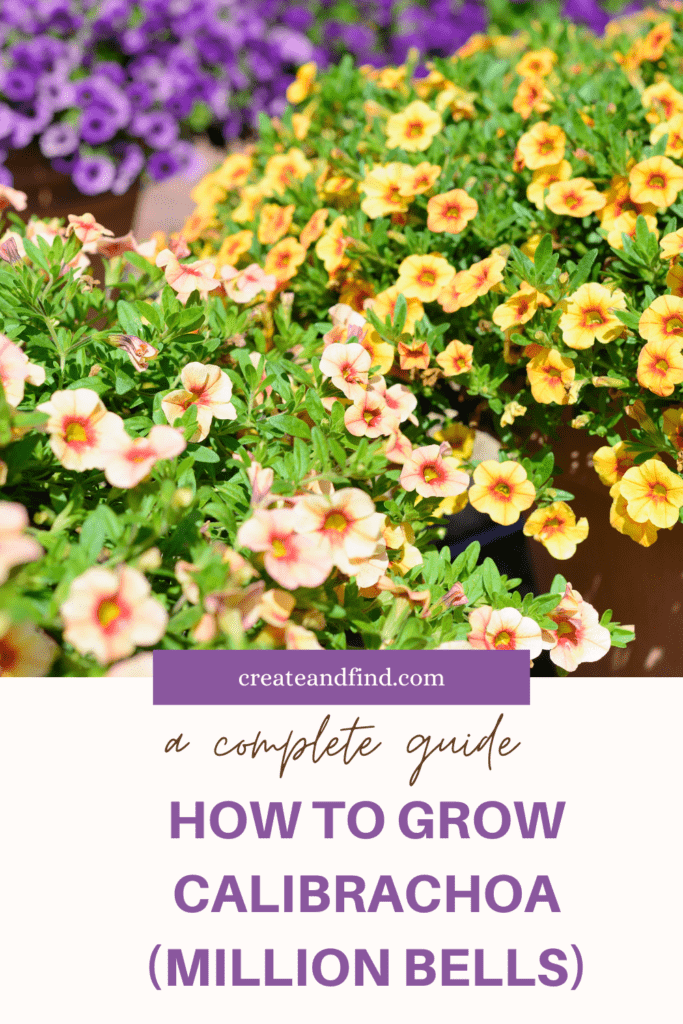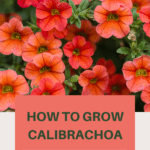Calibrachoa – a million bells – is a group of 28 species of popular annual outdoor container plants known for its rainbow flower colors and similarity to the beloved petunia flower.
With the proper Calibrachoa growing tips, you’ll have this prolific bloomer loaded with 1″ flowers and oval, sticky compact leaves. A million bells produce these continuous tiny flowers all season until the first frost in the right conditions. Keep reading to learn how to care for Calibrachoa plants.
Calibrachoa Growing Tips
Does Calibrachoa Like Sun or Shade?
Calibrachoa plants thrive in full sun, but they can also grow well in partial shade. It has the best growth with a minimum of six hours of sun exposure.
But in hotter climates where the full sun can be too harsh, your plants can tolerate some shade, especially during the summer. Conversely, not enough sun can cause short flower blooming.
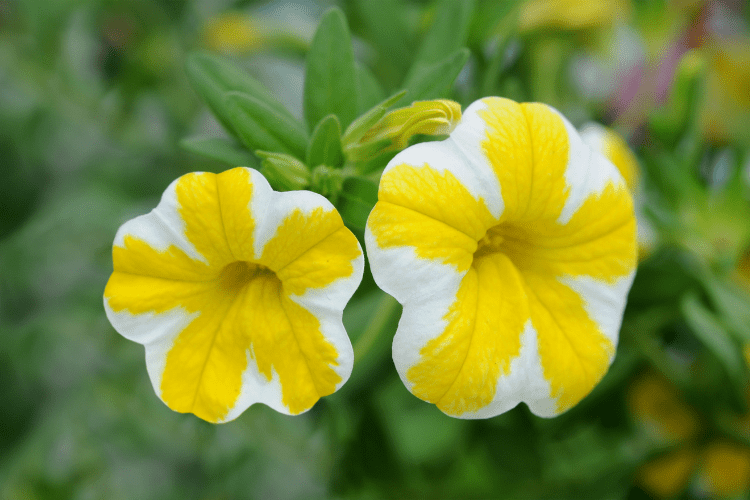
Is Calibrachoa Annual or Perennial?
Calibrachoa plants can grow as perennials – returning every year – in USDA hardiness zones 9-11. But in the rest of the zones, Calibrachoa is an annual bloomer that grows from spring through fall until frost.
Find your hardiness zone here!
Can You Grow Calibrachoa in Containers?
Calibrachoa flowers have a fast growth pattern that makes them exciting fauna to grow in a container or on the ground as borders.
This species blooms in a spilling habit, tumbling out of containers in flowing foliage and flowers in orange, coral, red, yellow, purple, lavender, blue, cream, pink, or burgundy.
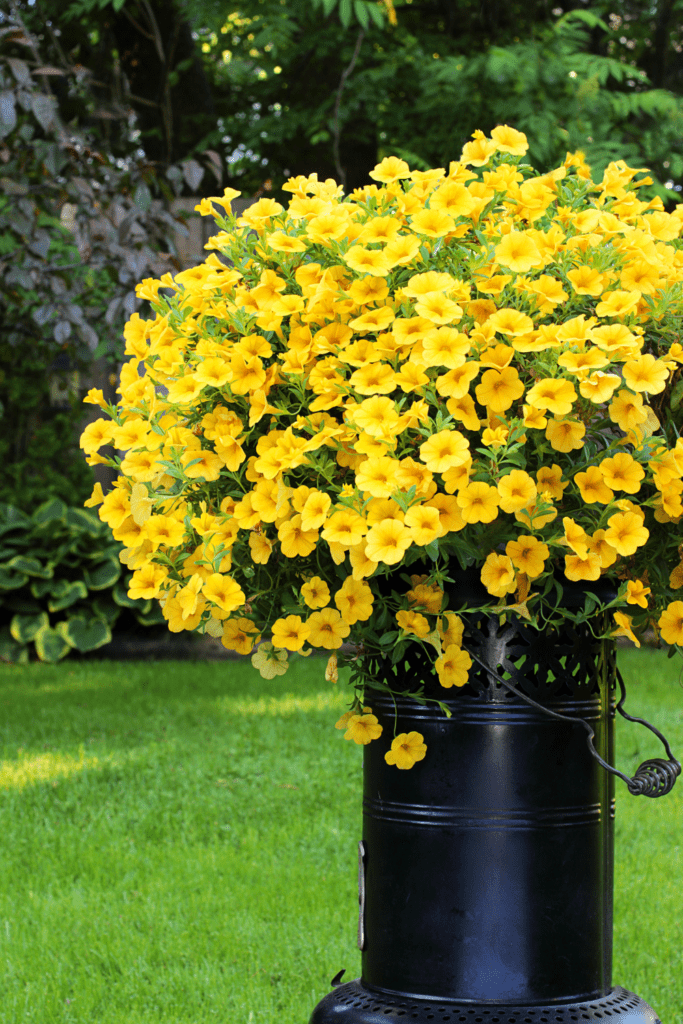
Is Calibrachoa Easy to Grow?
Compared to other plants, the Calibrachoa has relatively easy growing needs. An interesting thing about these flowers is that they are self-cleaning.
It’s never necessary to deadhead your plants to encourage better growth. But towards the end of the summer, your plants can benefit from a serious cutback.
The plants do best in fast, well-draining dirt in pots with strong drainage. When grown in beds or gardens, focus on good drainage with heavy organic material. A healthy layer of mulch will keep the soil and roots cool and moist.
What are Calibrachoa Water Requirements?
While Calibrachoa plants require adequate hydration to keep them moist, they shouldn’t get so much water that they become water-logged.
Your plants don’t need water until the first inch of soil is dry. Test the dampness of the dirt by putting your finger into the earth, down to your second knuckle. Or you can use a smooth bamboo stick.
If you can pull your finger or the stick out without dirt sticking to it or watermarks, your plant is ready for watering. However, until you’re used to your plant’s specific watering needs, it’s better to practice checking your soil multiple times – more often at the beginning of the growing season.
Hydrate your plant deeply until you see the water draining out of the bottom of the pot. Then wait until the soil dries back out before watering again.
Environmental factors like wind, lack of humidity, and temperature can cause the soil to dry out quickly. Some conditions can cause plants to require watering twice a day.
Are Calibrachoa Deer Resistant?
Deer are not attracted to Calibrachoa, but that is not enough to give this species classification of deer resistance.
Is Calibrachoa Toxic to Dogs or other Pets?
Calibrachoa plants do not contain toxic components that would harm dogs of any age or any of your other pets.
But because Calibrachoa plants require frequent and heavy fertilizing, there might still be a risk to your animals.
Be sure that any fertilizer you use on plants near your pets, like dogs, is not harmful. Compost and manure are very animal-friendly ways to keep your plants healthy without risking your pet’s health.
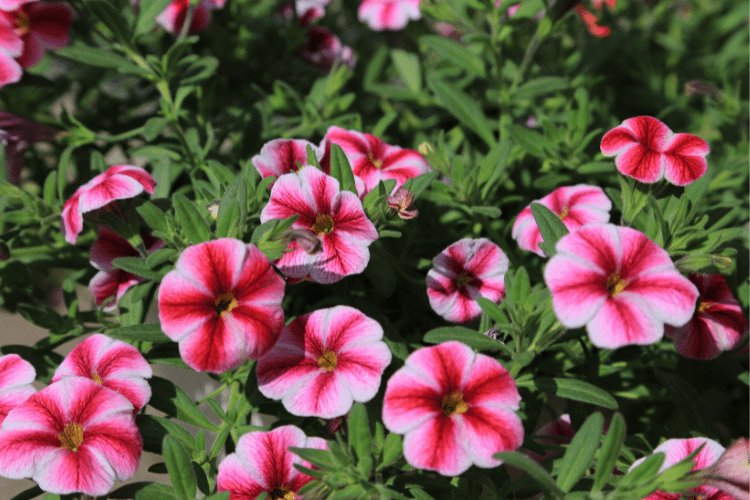
Calibrachoa Growing Tips – Why Is My Calibrachoa Dying?
Despite Calibrachoa’s easy care, several issues can cause your plants to die. For example, if your plants start to have yellowed leaves, it could be due to an iron deficiency (yellowing of new growths), a nitrogen deficiency (old growths yellow), and root rot.
Plants that lose vigor and experience reduced branching usually suffer from too high of a pH. Therefore, it does best with a pH of less than 6.5 – 6.0 is better (5.5 to 5.8 is recommended).
These plants can also experience vulnerability to diseases like Thielaviopsis, Phytophthora, and Pythium. Keeping your plants watered properly with increased air rotation can reduce illnesses.
Another issue that can cause your Calibrachoa plants to die is pest infestations. Aphids are the most dangerous pests to hanging Calibrachoa. But fungus gnats are also an issue. The larvae can cause the weakening of plant stems or death.
Once your flowers start blooming, they can get an infestation of thrips. However, managing soil moisture and applying larvicides can prevent larvae growth.
Other factors that can cause your plants to die in the early stages include improper soil pH, a contaminated crop, overwatering, low fertilization, and improper lighting.
Do I Need to Fertilize Calibrachoa?
Calibrachoa plants are heavy feeders. They do best with a single dose of slow-release fertilizer after planting. Choose a slow-release, organic fertilizer to mix into your pot’s medium.
Regular doses with a diluted liquid water-soluble fertilizer every two weeks can give your plants the strong energy boost they need to thrive. Adding later feedings towards the season’s end can prompt the growth of late bloomers.
However, over-fertilization of your Calibrachoa plants can be as harmful as under-fertilizing. A few signs that your plant needs a dose of fertilizer include light green or yellowish leaves. But these symptoms can also signify that your plants lack enough sun.
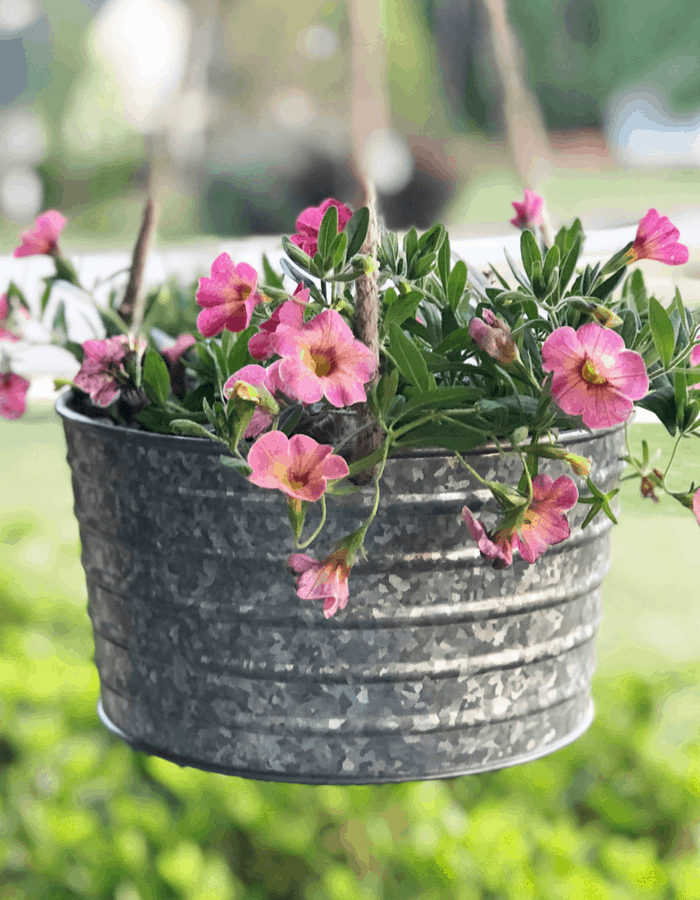
Is Calibrachoa a Good Option For Hanging Baskets?
Calibrachoa plants don’t just have the nickname “mini petunias” but also “spillers.” This name is about the fast growth that causes them to quickly spill out of the sides of any container they’re inside.
These baskets would be great options for these stunning flowers.
Do Hummingbirds and Butterflies Like Calibrachoa?
Hummingbirds are very attracted to the colorful trumpet Calibrachoa flowers because the shape makes it easy for their curved, long noses can fit inside.
The bright colors are also an attractant for the tiny nectar-loving birds. Of course, red flowers will get the most attention, but hummingbirds like purple, orange, bright pink, and yellow blooms.
Butterflies are also a fan of the sweet nectar produced by Calibrachoa flowers.
Related: Plants that Attract Butterflies and Hummingbirds
Final Words – Calibrachoa Growing Tips
If you’re looking for an incredible, fast-blooming plant heavy with tiny, colorful flowers that attract pollinators, the Calibrachoa – Million Bells – is the flower for you. Available in multiple colors, the bell-shaped blooms can liven any border or garden.
But they’re even more fabulous when grown as container plants, which inspire their common name of spillers. So try these easy-care plants for your next landscaping project.
